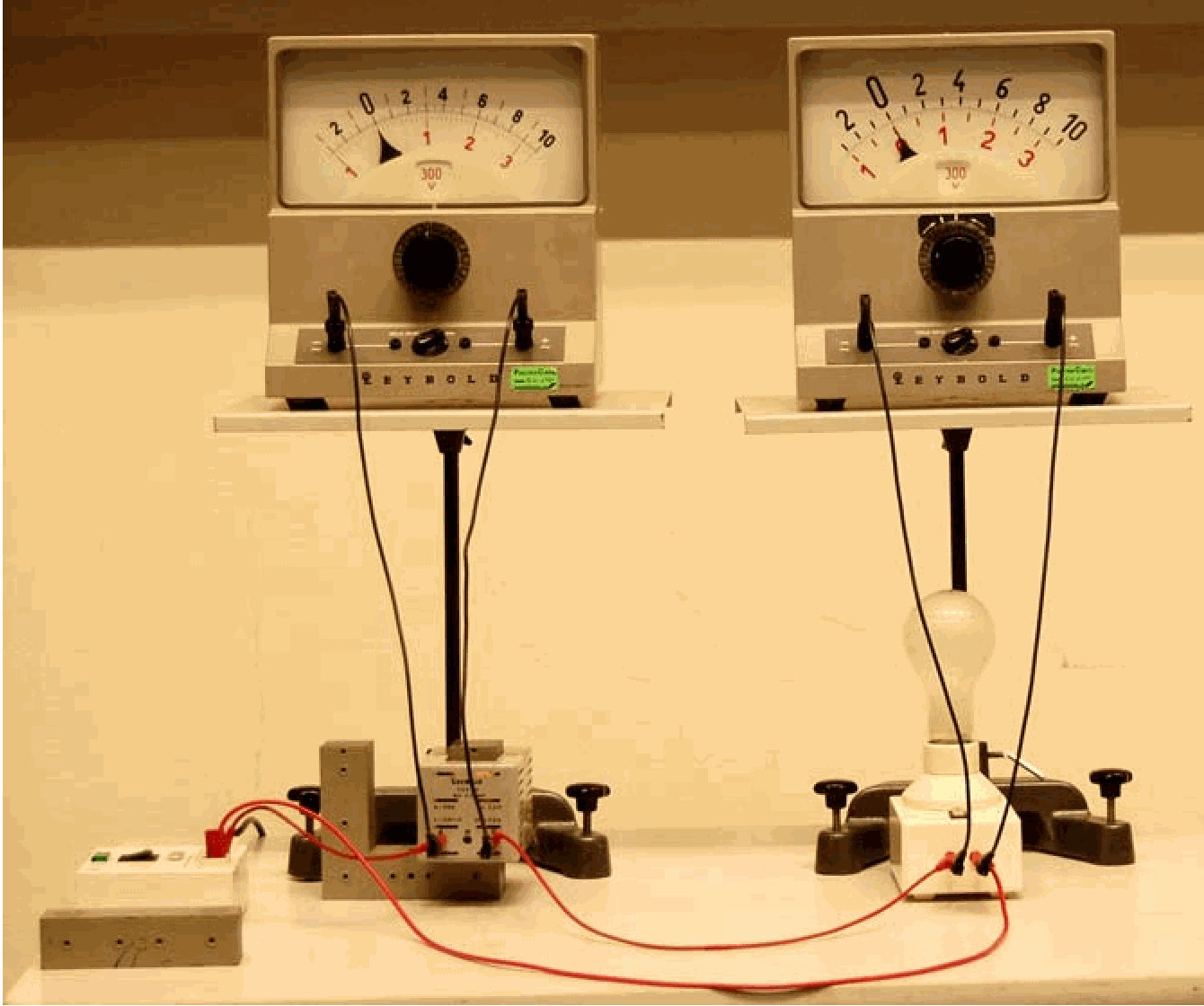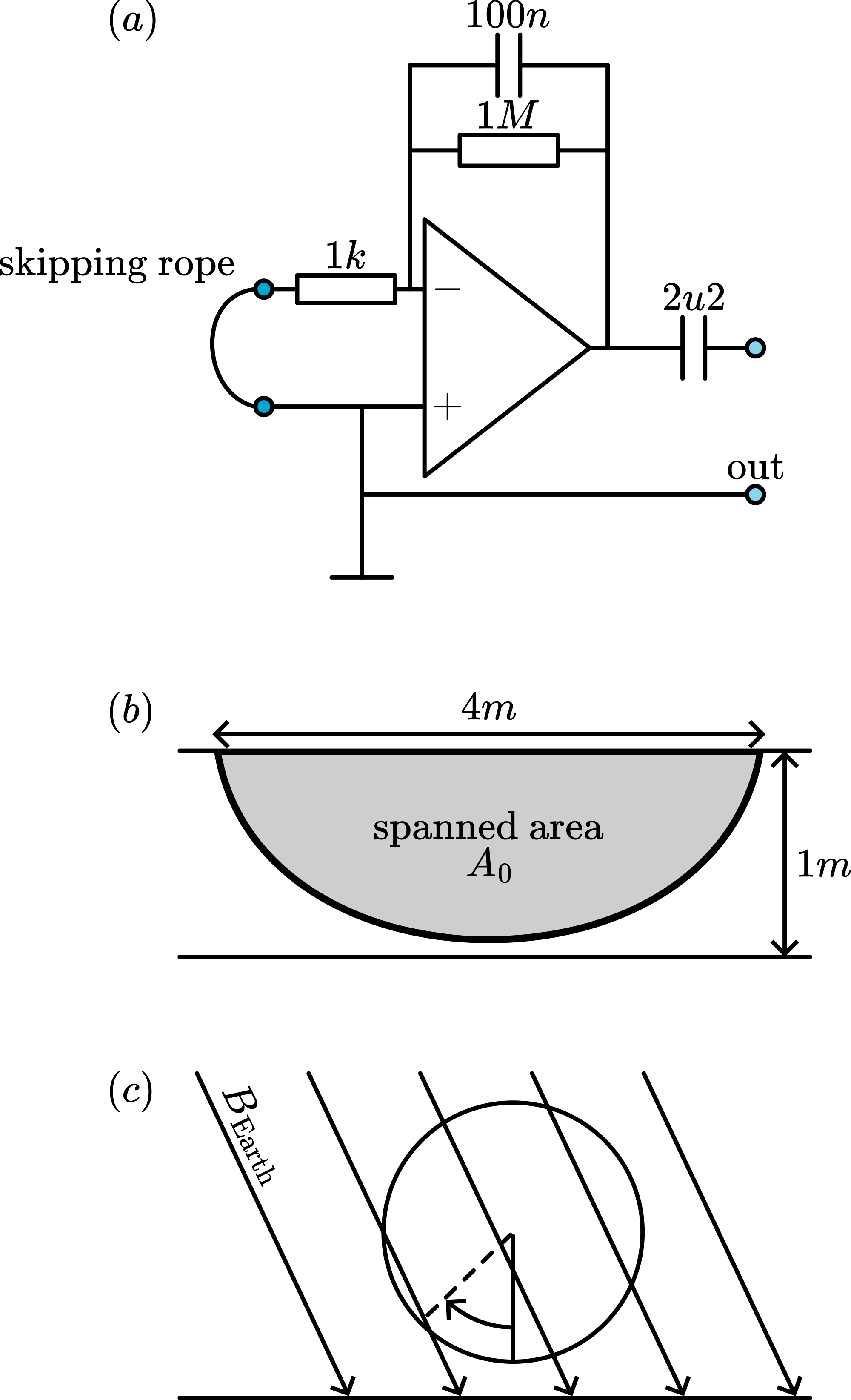02 Arago’s Disk#
Aim#
To show an example of eddy currents.
To show the power of Lenz’s law to explain the occurring Lorentz force.
Subjects#
5K20 (Eddy Currents)
Diagram#

Fig. 537 .#
Equipment#
Circular copper disk on needle point.
Two strong magnets (neodymium) on rotating support.
Sheet of Perspex or glass.
Safety#
The needle that supports the copper disk is very sharp. Arago’s Disk
Presentation#
At first we show that the copper disk experiences no attraction to a magnet: the copper disk is not ferromagnetic.
Then the circular copper disk and the rotating magnets are positioned such that the magnets pass closely by under the rim of the disk. The sheet of perspex fits freely between the copper disk and rotating magnets (this sheet prevents that the audience might think that air-currents make the copper disk move).
-Now, by hand, the magnets are given a push so they turn at high speed.
Immediately the copper disk starts turning as well, trying to follow the magnets. -When next the magnets are made turning in the other direction, the copper disk slows down and soon follows again the movement of the magnets.
-When we stop the rotation of the magnets, the copper disk brakes and will stop its movement soon.
Explanation#
We explain the first presented demonstration (see Figure 538). The other two demonstrated situations can be explained similarly.
In general, an emf is induced in the copper disk when there is a change in magnetic field. This happens at the front- and backside of the passing magnet. At these points, eddy currents flow in the copper disk.

Fig. 538 .#
Explaining with Lenz’s law.#
According to Lenz’s law, the direction of these induced currents is such that they oppose the occurring change of flux:
-When flux is approaching the copper disk, the copper disk “wants” to move away from that approach in order to maintain the flux-free situation (this happens at front side of the moving magnet).
-When a flux is moving away from the copper disk, the copper disk “wants” to move with it in order to maintain its flux-present situation (this happens at tail-side of the moving magnet).
Both front- and tail-side will make the copper disk move with the movement of the magnet.
Explaining with Lenz’s law and Lorentz-force.#
-When flux is approaching the copper disk, the copper disk “wants” to move away from that approach in order to maintain the flux-free situation.
So, in the disk a current is induced such that it produces a flux opposing that of the magnet (this happens at front-side of the moving magnet).
-When a flux is moving away from the copper disk, the copper disk “wants” to move with it in order to maintain its flux-present situation. So, in the disk a current is induced such that it produces a flux in the same direction as that of the magnet (this happens at tail-side of the moving magnet).
Looking at the induced currents and the subsequent Lorentz-force (induced current in magnetic filed), both forces on the front- and tail-side make the copper disk move with the magnet (see Figure 538), showing the direction of the Lorentz forces ( \(F_{L}\) ) making the disk move in the same direction as the magnet does. (Only the forces closest to the magnet are drawn.)
Remarks#
A piece of tape is stuck on to the copper disk to make the rotation easily visible to the audience.
The copper disk is balanced using small pieces of wax.
The demonstration can be performed the other way round: rotating the copper disk makes the magnet assembly on the rotating support go around. In such a way the demonstration is usually described in literature (a magnet needle over a fast spinning copper disk). Historically the phenomenon was observed by Arago in 1825. He observed that a compass needle in the vicinity of a piece of copper “reduces the effect of the earth’s magnetic field on the needle” ( = damping of the needle’s oscillations; see the demonstration [Aragos compass needle](../5K2001 Aragos Compass Needle/5K2001.md) in this database) and that a rotating copper disk deflects a compass needle from its north-south orientation. Arago did not understand it; Faraday did in 1832.
Sources#
Biezeveld, H. and Mathot, L., Scoop, Natuurkunde voor de bovenbouw, part 5/6 vwo, pag. 138
Sutton, Richard Manliffe, Demonstration experiments in Physics, pag. 344
Giancoli, D.G., Physics for scientists and engineers with modern physics, pag. 744
